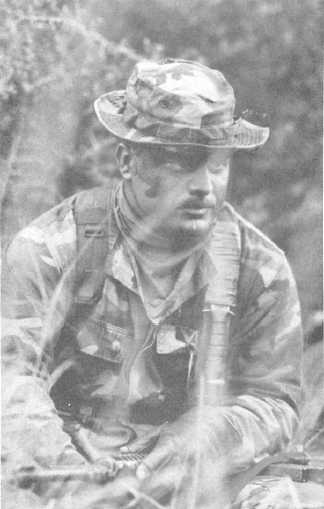Tony Giberson
165.3
Figure 12-4.—“Posed” photographs should appear as
if the l action were spontaneous.
Shoot only when you have in mind the type of
photograph you intend to take.
Keep the photographs from looking posed.
Posed photographs are permissible and for best
results, it is often necessary for subjects to pose,
but this fact should not be discernible in the
finished photograph (fig. 12-4).
Set the stage, place the props for dramatic effect
and tell the people what to do and how to look.
As we emphasized in Chapter 11, you must be
in charge when directing photographic subjects.
Resist the temptation to ask the photographic
subject(s) to “hold for one more.” Most people
will do almost anything required for the first
take; thereafter, they lose interest quickly in
cooperating
with
the
project,
and
the
photograph ultimately suffers. However, if you
feel that for some technical reason you did not
get the photograph the first time, do not hesitate
to speak up and ask for another shot. Remember,
you were sent on the assignment to get pictures,
and this is what you are expected to deliver.
Photograph the faces that fit the emotion. A
smile or pleasant expression does not show a
lack of dignity; it shows that Navy men and
women also have fun.
Move in on your subject and make your
photographs show the desired action. Seldom, if
ever, will you be concerned with sweeping
panoramas, unless they tell the story you want
told.
Learn as much as you can of the event, the
shooting locale and the principles involved
before you leave the public affairs office.
Identification
Always record sufficient information so you may
properly identify and prepare cutlines for your
photograph upon returning to your office. Using a
notebook or caption log to record cutline information
was covered in Chapter 9. Additionally, you may have
an assistant jot down the information or tape record it as
you go along.
Shooting Script
Some professional photojournalists plan their
shooting with great care, including a complete shooting
schedule or script. You should study the script before the
assignment and commit it to memory, rather than
checking it shot by shot at the scene. Often, you may
have to depart from your script when shooting at the
scene. You must stay one jump ahead of the action, and
when the unexpected occurs, be prepared to make a
change — remembering your story angle and objectives.
A good script is usually divided into two parts. The
first part is concerned with the general idea of the picture
story. All pertinent information, such as names, places,
times and contacts are listed in this part. The second part
lists the picture ideas and the information pertinent to
each shot.
PART ONE.— The research of a photo feature
theme is of the utmost importance to the success of any
picture story. A firm idea of what is going to be shot and
the approach that will be taken is needed before shooting
12-5

